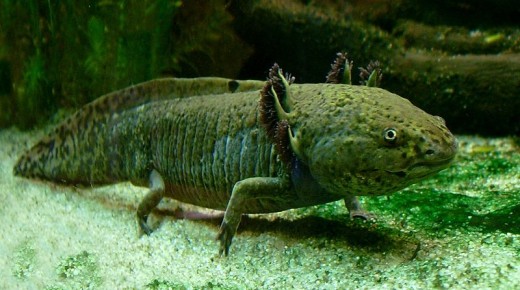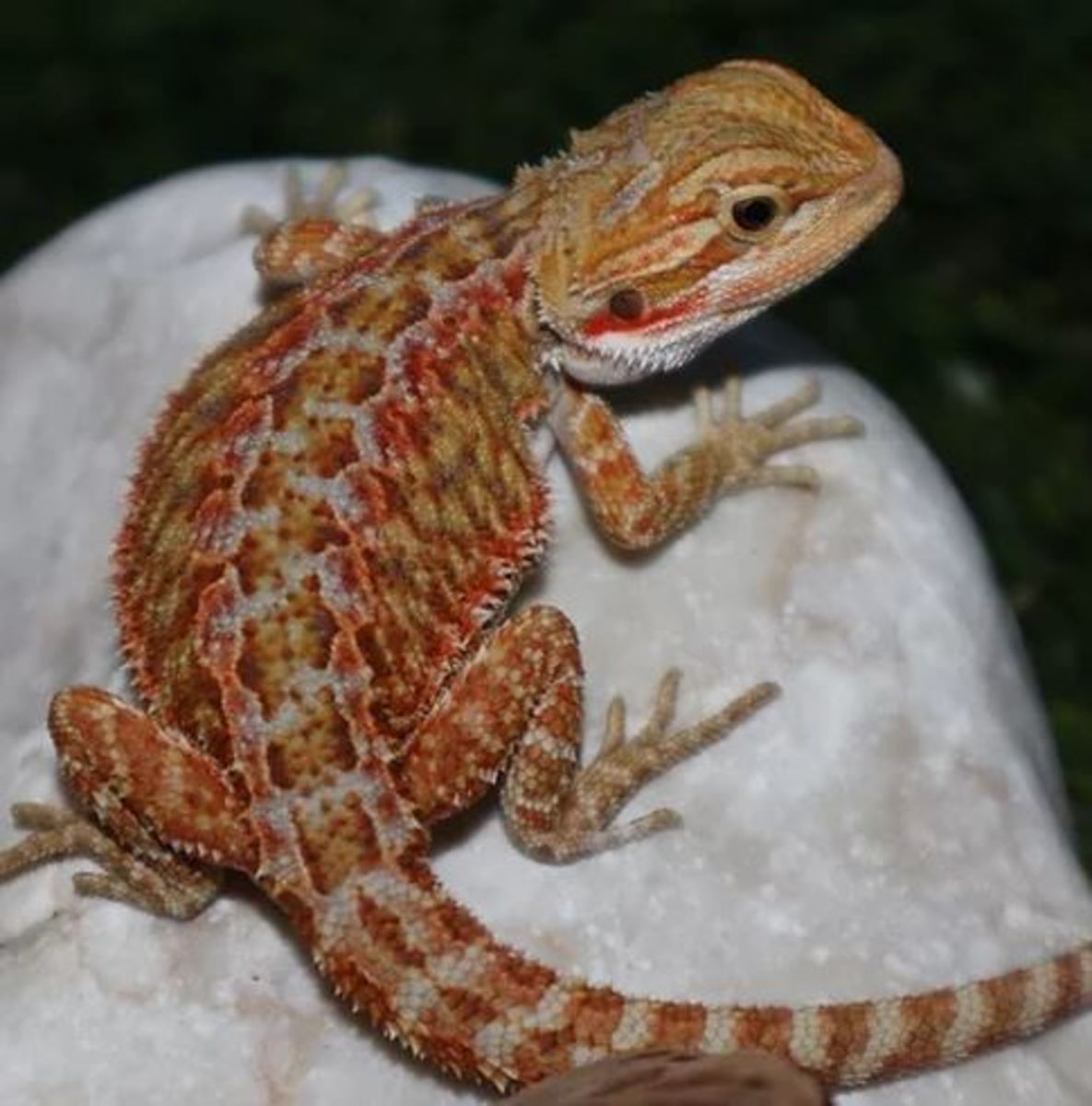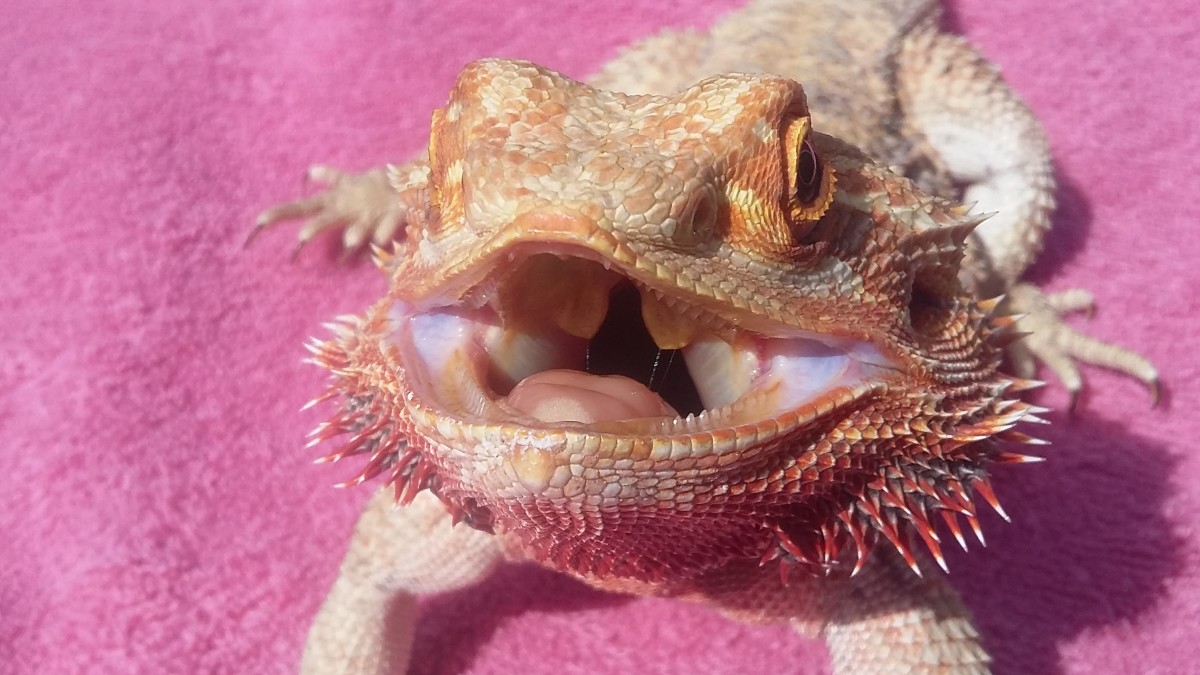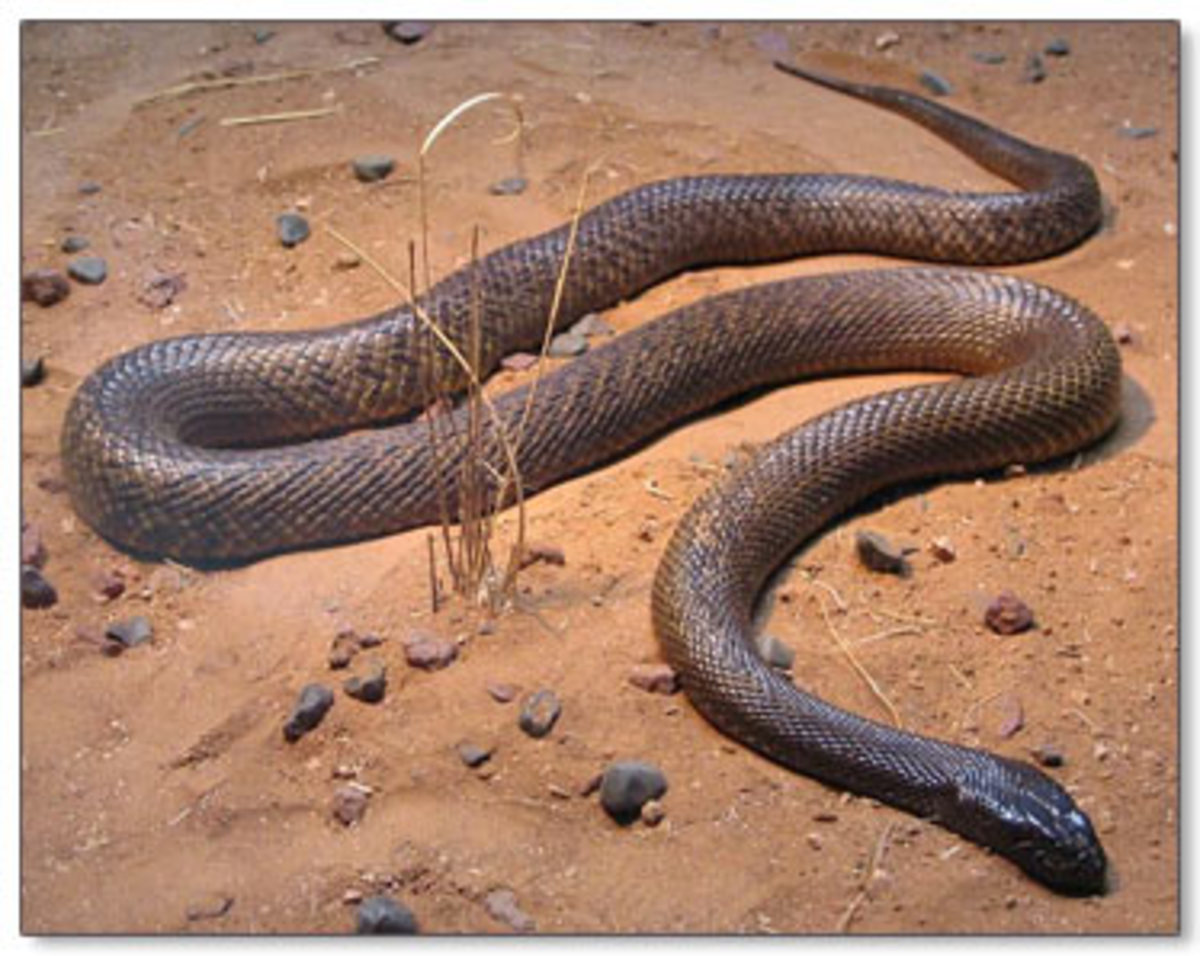Axolotls are Peter Pan salamanders
Axolotl

Axolotl the Salamander like Peter Pan
Just like Peter Pan in the classic story book by J. M. Barrie, the Axolotl refuses to grow up and never becomes more than a massive salamander tadpole that lives all its life underwater.
The Axolotl (Ambystoma mexicanum) is an example of an animal in a state of neotony, which means that its normal metamorphosis stops and the creature stays in its larval or tadpole stage for the rest of its life. It is able to reproduce while still not having transformed into a normal adult. Adult salamanders lose their external gills and are able to leave the water as true amphibians but this does not happen in the Axolotl. There are several other salamander species that are like this as well such as the Mudpuppy and the Olm. Very sadly, like the Axolotl these other neotonous salamanders are threatened by habitat destruction and pollution.
Ode to an Axolotl
Primeval like something from the dinosaur age,
Hanging in the water,
Dark like a bat or as a manta ray,
Yet with a chubby face and googly eyes,
Cuddly and appealing.
You hold your little hands out like a child,
Your smile so innocent
And you move serenely, taking your time.
Other times you can be a vicious beast
And bite the hand that feeds.
You make love while still a child for
A mature salamander you shall never be:
Timeless Peter Pan of the Animal Kingdom,
Axolotl, Water Baby, how I love you.
By Steve Andrews/Bard of Ely
All about the Axolotl salamander
Axolotls were only ever found in two lakes in Mexico near Mexico City - the Lake Xochimilco and Lake Chalco - but sadly the latter of these was drained and no longer exists. The other lake is a lot smaller than it was and is mainly composed of canals. Not only that but Axolotls have been hunted as food for the local people and this drastically diminished their numbers.
Pollution and introduced fish that will eat Axolotl tadpoles and the food of the species have also had a terrible effect on it in the wild habitat. The Axolotl is now officially listed as Critically Endangered, though fortunately there are billions of this fascinating amphibian kept and bred in captivity around the world.
Axolotls can grow to a maximum of 18 inches, although this is very rare, and they normally don't get any longer than 12 inches. Axolotls can breed after they become mature between 18 and 24 months. Males can be determined by their swollen genital organs or cloacae, and the females are easy to distinguish because get much fatter being laden with eggs.
There are several colour forms of the Axolotl. In the wild there was a dark brown and a black form but captive breeding has created an albino of golden, tan or pale pink body colour but with pink eyes, and the leucistic variety with a pale pink body but black eyes.
Axolotls are carnivores and will eat small fish, insects, worms and other creatures they can swallow down. They will also turn into cannibals and think nothing of eating smaller Axolotls or of biting a leg, foot, gill or tail off a grown one if given the chance and hungry enough. Fortunately this amazing salamander can regenerate limbs and gills as long as no infection sets in. In captivity they will also take chunks of meat and fish. Well-cared for Axolotls will live as much as 15 years or even longer.
They are best kept at around normal room temperature and need a large aquarium with plenty of water plants and swimming space. Being aggressive carnivores they should not be kept with other fish or water creatures because they will eat them. As has been pointed out they will also devour their smaller relatives.
It is a sad reflection on the state of the world today that this unique creature is really only surviving because it is being kept and bred as a pet and laboratory animal, and that otherwise it is likely to become extinct in the wild.
Axolotl babies
Ode to an Axlotl can be heard here
- Ode to an Axlotl by Bard of Ely and Frank Moore\'s Cherotic All-star band
Bard of Ely and Frank Moore's Cherotic All-star band | Electronica | San Marcos, ES
Keeping and breeding Axolotls
Axolotls are easy enough to get to breed. Just keep them well-fed and provide a large enough aquarium with clean fresh water and plenty of aquatic plants. I used to give mine earthworms most of the time and they really seemed to enjoy grabbing the worms and swallowing them whole.
The female will be fertilised with a spermatophore, a capsule of sperm she absorbs up into her genital opening, just like is done with species of newts. She lays the eggs in her own time by crawling around in floating and growing aquatic plants and attaching the eggs to leaves and stalks. This is why it is important to include water plants. Growing these in bunches and having some floating plants is a good idea.
As with other forms of tadpole when in the spawn stage, you can watch the embryos develop through the transparent jelly. Baby Axolotls grow very fast once hatched and the best food I found to start them with was newly-hatched brine shrimp just like I fed to baby tropical fish.
Some tadpoles will grow faster and develop their front legs. They need to be watched at this stage as they will eat smaller brothers and sisters. Basically the more room you give them the less likely this is to happen but at the same time you won't want them all surviving or you will end up with far too many. You will be surprised to see how fast these greedy tadpoles transform into mini-Axolotls with four legs, a tail and gill plumes sticking out from their heads.
Axolotl link at Wikipedia
© 2011 Steve Andrews



